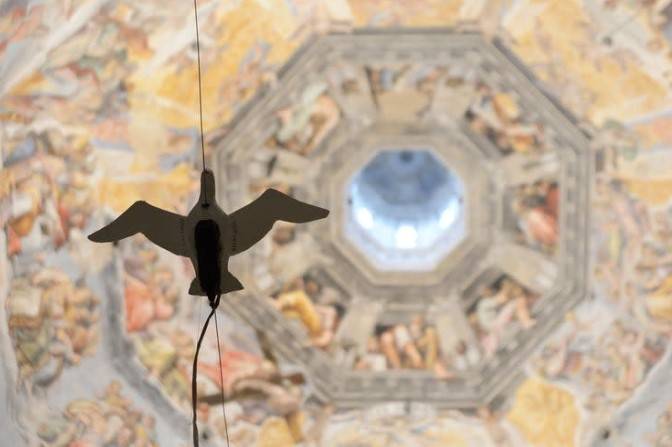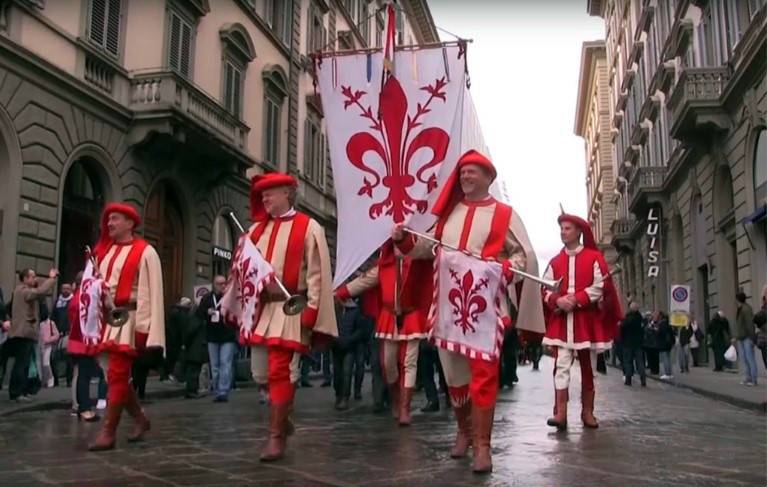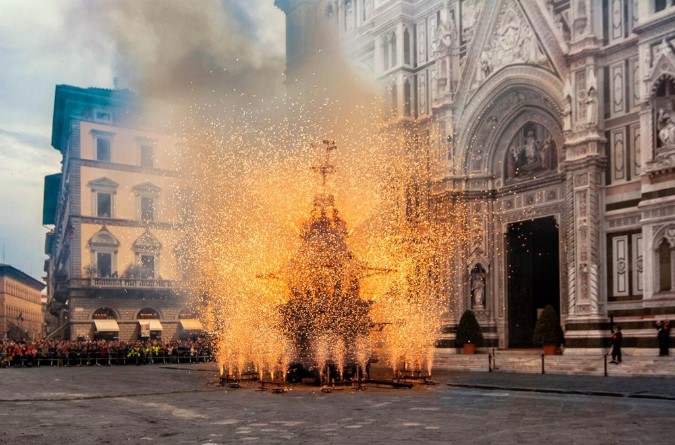Easter in Florence, “Lo Scoppio del Carro”
The Scoppio del Carro (Explosion of the Cart) is one of Florence’s oldest and most spectacular Easter traditions. This celebration, held every Easter Sunday, has its roots in the time of the Crusades and combines religious and folkloric elements in a unique event that attracts both Florentines and tourists from all over the world.
Historical Origins
The tradition dates back to the 11th century, when, according to legend, the Florentine knight Pazzino de’ Pazzi, who participated in the First Crusade, was the first to scale the walls of Jerusalem in 1099. As a reward for his bravery, Pazzino received three fragments of stone from the Holy Sepulchre from the Crusader leader Godfrey of Bouillon.
Upon his return to Florence, these relics were preserved and used to light the Easter Holy Fire, symbolizing Christ’s resurrection and the purity of faith. Over the centuries, this practice evolved into the spectacular ritual of the Scoppio del Carro.
The Ritual of the Scoppio del Carro
The event takes place in Piazza del Duomo, in front of the Cathedral of Santa Maria del Fiore. The main feature of the celebration is the "Brindellone", a towering cart about 10 meters high, pulled by two pairs of white oxen adorned with garlands. The cart, built in the 17th century, is transported from its usual location in Porta al Prato to the square.

The highlight occurs during the Easter Mass, when, after the singing of the "Gloria," the Archbishop of Florence lights the "Colombina", a small dove-shaped rocket symbolizing the Holy Spirit. The Colombina travels along a wire from the Cathedral’s main altar to the Brindellone, igniting the fireworks on the cart.
If everything goes smoothly and the Colombina returns to the altar without any issues, it is considered a good omen for Florence and its people, promising prosperity and a bountiful harvest for the year.
Meaning and Importance
The Scoppio del Carro represents a unique blend of religion, history, and popular tradition. The event is of great significance to Florence, and the proper execution of the ritual is seen as a prediction for the city's future.
Today, this celebration continues to captivate both locals and visitors, keeping a strong connection with the past and highlighting the extraordinary cultural heritage of Florence.

Photos: Firenzemadeintuscany.com


 English
English Italiano
Italiano Deutsch
Deutsch Français
Français